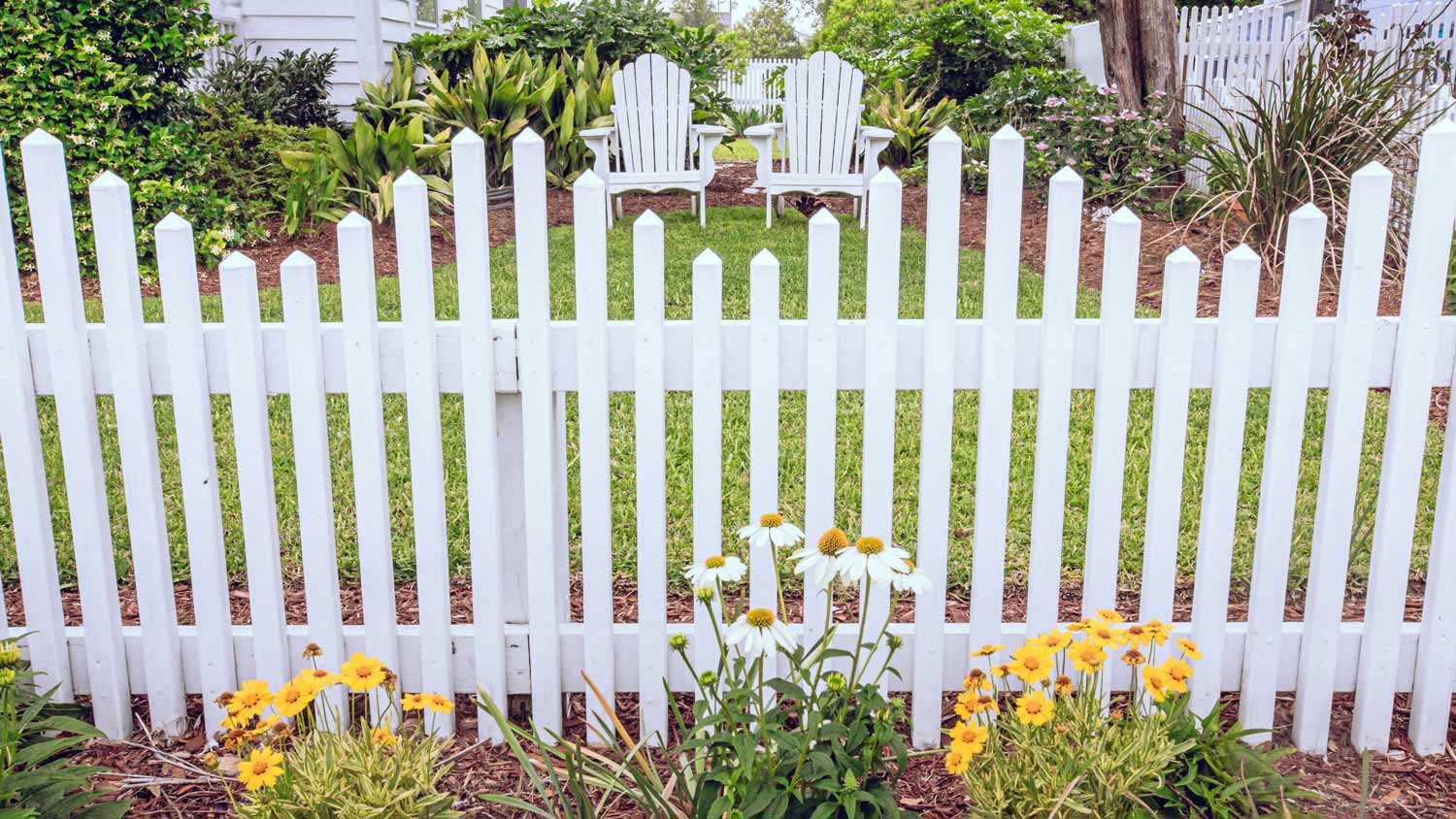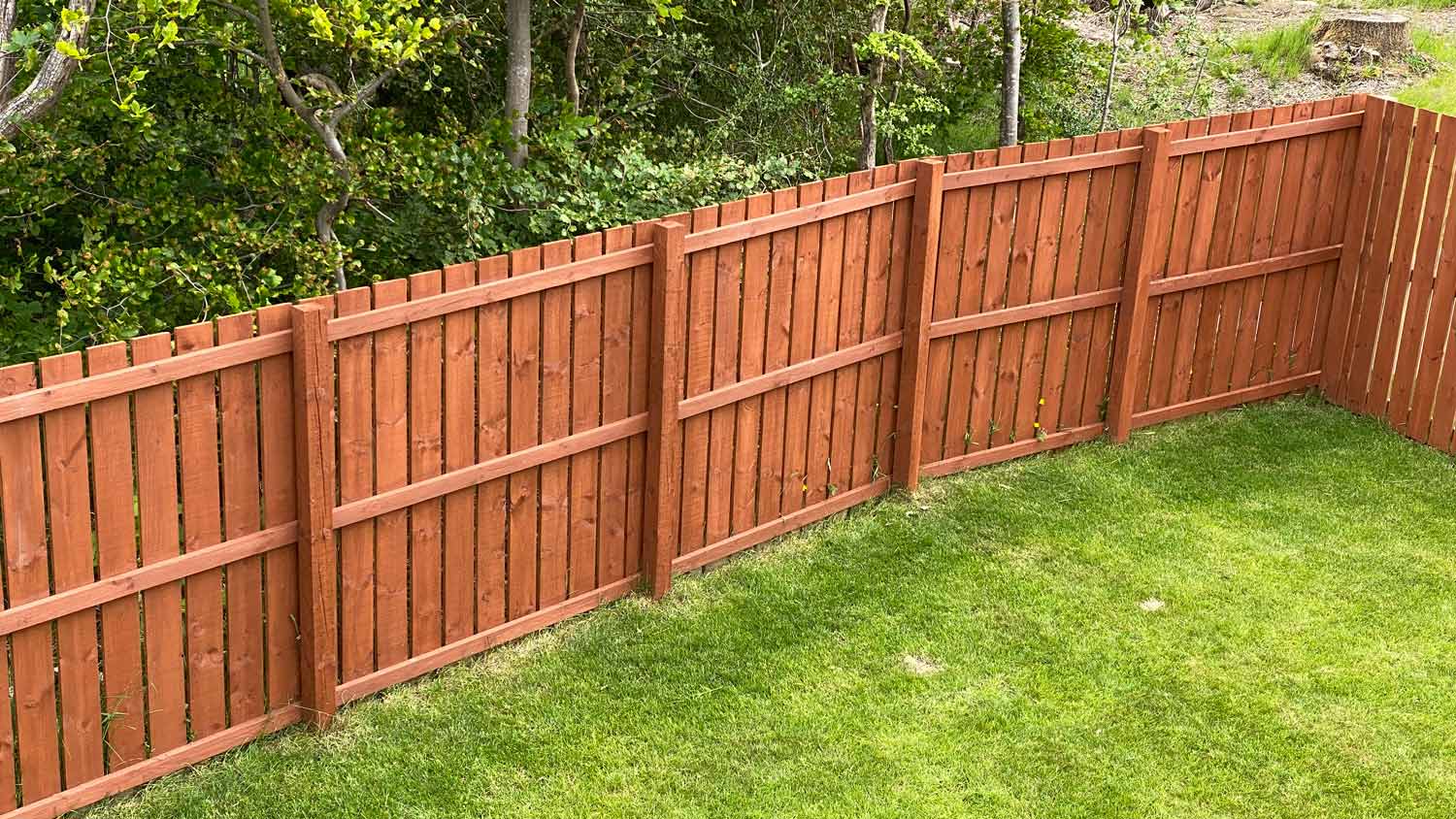
Fence installation costs in Atlanta depend on the size of your fence and the materials you choose. Labor rates and time of year also play a role in the final price.
Find the right fence style to fit your yard


Fence pickets are individual pieces, while panels are larger slabs of fence material.
One fence panel is equivalent to 15–20 pickets.
Pickets can take several days to install, while panels can be installed in one day.
Both fence pickets and panels can last up to 30 years with regular care.
When you’re prepping your yard for a fence installation, one thing you need to consider is whether you want to use fence pickets or panels. Pickets could offer a unique look for your hilly property, but you could save more time and money by opting for panels. Find out all the pros and cons of fence pickets versus panels to choose which is right for your project.
The biggest difference between a fence picket and a fence panel is the size. Pickets are individual boards of fence, while panels are larger, pre-assembled slabs of fence material that take up the space of 15 to 20 pickets. Pickets offer more customization and work great for irregularly shaped or hilly spaces, while panels are uniform and are best installed on flat, rectangular properties.

When you think of a picket fence, you may picture a white fence with spaces between each panel surrounding a one-story cottage home with a colorful flower bed out front. But what a fence picket really means, especially compared to a panel fence, is that the fence is installed by each individual piece of fence material, often wood, known as a picket.
| Pros | Cons |
|---|---|
| Custom options | Harder to DIY |
| Easy to repair | More expensive |
| Durable | Less privacy |
Best for:
Hilly or irregularly shaped areas
Precise or custom finishes
Professional installation
A major benefit of buying and installing a fence by the picket is that this gives you more control over the final look of your fence. If you need shorter pickets to place over a hill or taller pickets to fit into valleys while maintaining an even top fence line, pickets are the way to go.
Because the pickets are individual pieces of fence, if one begins to split, rot, or show other signs of damage, it’s easy to remove it and replace it without altering the rest of the fence. Pickets are also highly durable. With the proper support, they should stand up well against storms and wear and tear.
Installing each individual picket and connecting them to one another is a long process, and if you need to trim pieces down to size, it adds another layer of complexity. Picket fence installation is best left to a fencing pro near you so that you don’t accidentally install the fence the wrong way.
Purchasing individual pickets, plus rails to connect them, can be more expensive than buying panels. If you opt for customized pickets, the cost will also be higher.
Unless you’re installing each picket up against one another, which is time-consuming, your picket fence will have spaces between the pickets. That means this option offers less privacy, but it can still keep kids and pets inside your yard.

A panel fence features one large slab of fencing material that takes up the same amount of space as 15 to 20 individual pickets. Rather than installing each picket and connecting them together with rails, a panel fence is one continuous piece of fence that covers a larger space.
| Pros | Cons |
|---|---|
| Easier to DIY | Less customization |
| Lower cost | Heavy |
| Faster installation | Harder to repair |
Best for:
Square or rectangular plots of land
DIYers
Uniform finish
For a faster installation that’s DIY-friendly, consider a panel fence. Because each piece is larger and uniform, panels are often considered easier to install yourself.
Panel fences tend to ring in at a lower total cost than pickets, too. They’re often made with lower-cost materials, like faux wood rather than natural wood, which helps reduce costs, plus they include supports.
Whether you DIY or hire a pro, a panel fence can go up quickly. Rather than setting each picket, you can cover more ground by installing panels, meaning you can have your yard fenced in before the big summer cookout you’re hosting next weekend.
Because fence panels are sold in set sizes with slabs of fence material, there’s less customization available than if you buy each picket. The panels are also more challenging to work with on hilly or irregularly shaped yards because they can’t be adjusted to fit around these obstacles.
While panels are quicker and easier for DIYers to install, they can still be pretty heavy when compared to handling one picket at a time. Make sure to recruit a few friends to help you carry and position your fence panels.
One of the biggest drawbacks to a panel fence is their difficulty to repair. If a panel is damaged by a rogue baseball or a storm, you’ll have to remove the entire panel and replace it.

Now that we’ve covered the pros and cons of each fence style, consider how fence pickets and panels stack up for your project.
For a precise finish and attractive look, consider installing a fence by the picket. By installing a fence picket by picket, you can create a clean look that can adapt to any hills or valleys on your property.
While both fence pickets and panels come in a wide range of materials and styles, fence pickets offer more customization opportunities. By buying individual pickets, you can choose to install accent pickets or customize the look of each piece.
Because they’re made with long-lasting materials and have support for each individual picket, fence pickets last longer. Using the right nail size for fence pickets can also extend their lifespan.
With regular resealing, your fence pickets could last 15 to 30 years. However, don’t discount panels—these fence pieces can also last up to 30 years, but they are harder to repair, which limits their durability.
Fence panels are prefabricated and often made with more affordable materials. Purchasing a fence by the panel can lower the cost of your fence installation, especially because you don’t need to purchase rails.
Installing fences by the panel is faster and easier than installing each individual picket and then connecting all the pickets. That’s why panel fences are considered DIY-friendly. No matter what style you choose, though, make sure to choose the right wood for your fence posts to keep the fence steady.
Imagine a windstorm blows through and pelts your fence with twigs and rocks. Fortunately, it’s easy to remove one or two damaged pickets and repair or replace these fence pieces with new matching pickets. If part of a fence panel is damaged, repairs will often require you to replace the entire panel.
Panel fences are often made with vinyl, faux wood, or composite materials that are easy to care for. Cleaning the panels is simple to do with just a garden hose and some warm, soapy water for stubborn spots. Plus, fence panels don’t require stain, sealant, or other coatings.
As long as you keep up with maintenance, both fence pickets and fence panels should last up to 30 years. The lifespan of your fence ultimately depends on the material it’s made of, upkeep, and how quickly you tend to repairs.
Fences are only sold by the panel when they’re made from materials like faux wood or vinyl. Those materials are durable and easy to maintain, but they aren’t quite as eco-friendly as a fence made from natural wood. Of course, you can still find panels made from wood, but they will come at a higher cost and could be very heavy to handle.
No matter whether you install a fence by the picket or the panel, your project can improve resale value by upping curb appeal and increasing privacy and safety. The ROI for installing a fence is 40% to 70%, depending on the fence style and your home. But most importantly, installing the right fence can make your yard more enjoyable and safe for your family, which is priceless.
From average costs to expert advice, get all the answers you need to get your job done.

Fence installation costs in Atlanta depend on the size of your fence and the materials you choose. Labor rates and time of year also play a role in the final price.

Silt fence installation costs vary depending on the size of the lot, the fencing type, and the installation technique. Use this guide to get the budget right.

Vinyl fence costs in Atlanta depend on the length, height, and style you choose. Let’s break down all the price factors so you can budget accordingly.

The best wood for fencing is also the most durable—and beautiful. Our guide breaks down the top picks for your wood fence project.

There are a lot of different types of farm fencing. Find the one that’s right for your property with our handy guide.

Determining whether to repair or replace fence installations can be a difficult choice. Learn more about what factors can help you decide which way to go.